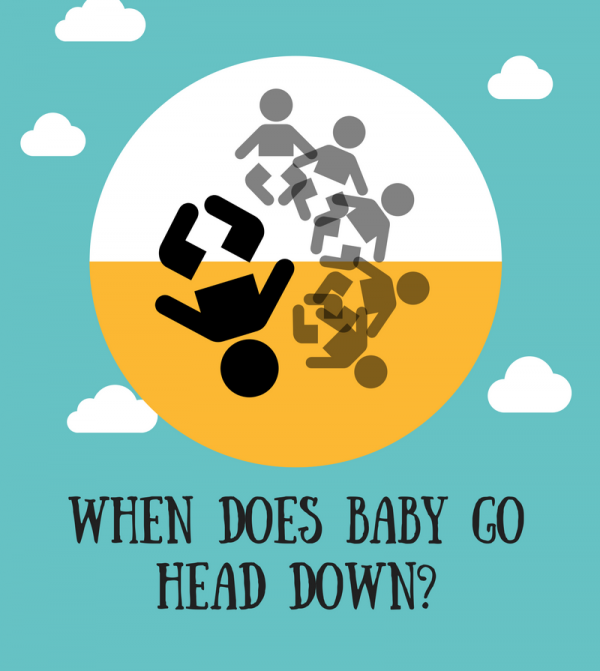
About 95% of babies will turn head down before delivery. It’s important to be aware of your baby’s position after 32 weeks so you can help it turn head-down if needed.
Babies spend most of their time in utero with their heads up by the mother’s heart. As the baby gets heavier and prepares to be born, it turns upside- down to prepare for head-first delivery.
When babies turn into vertex position (also called cephalic presentation) varies with the baby, but most will go head-down around 32 weeks.
At 32 weeks, there is still a greater than 50% chance that the baby will go head down on its own. But the chances of spontaneous version quickly reduce as the weeks wear on.
Get checked early!
I always encourage people to ask their provider to check baby’s position at the appointment closest to 32 weeks.
Most providers do not look at baby’s position in the womb until 36 weeks. The four weeks before that are the best time to encourage a baby who hasn’t flipped.
A lot of the natural ways to help turn a breech baby don’t work as well after 36 weeks when the baby is heavier and more settled.
Still not head-down?
If you have access to a provider who offers vaginal breech birth, what happens with your baby’s position is not as important.
If you don’t have access to vaginal breech birth, and the baby still has not gone head down at term, the only choice left is a cesarean. If a baby is breech at 36 weeks, ask your doctor or midwife about an ECV (external cephalic version).
You can learn facts about ECV and see the risks of ECV. The procedure involves turning your baby manually in order to reduce the likelihood that a cesarean will be recommended.
If your baby is still breech at 37 weeks, your provider (or a referral who is skilled at ECV) will perform an ECV.
If your baby is breech at 38 weeks or after, your time may be better spent preparing for the delivery and baby. Babies do go head down at 39 weeks and 40 weeks and even in labor, but the likelihood is small.
How to encourage baby to go head down
If you are aware of the importance of fetal position early in pregnancy, you can adopt some practices to give baby the best space. If you are already trying to flip a breech baby, these can help but aren’t generally accepted to be ways to turn a breech.
- Starting between 20-30 weeks, avoid the couch! No recliners, either.
- When you sit, sit with your butt above or at the level of your knees.
- Sit on your sitting bones–your pointy butt bones–not on your tailbone.
- Do some hands-and-knees exercises daily. Or just crawl around a bit.
- Go on 10+ minute walks every day, especially outside.




